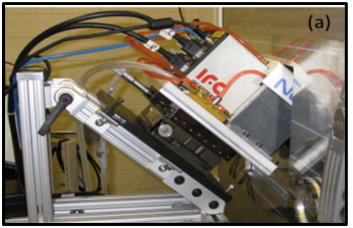3D printing, particulalry laser-powder bed fusion or L-PBF, requires a great deal of monitoring to avoid defects and flaws in the final parts. In a thesis entitled “Process Monitoring for Temporal-Spatial Modeling of Laser Powder Bed Fusion,” a student named Animek Shaurya studies the use of high-speed video cameras for in-situ monitoring of the 3D printing process of nickel alloy 625 to detect meltpool, splatter, and over melting regions to improve the quality of the print.
“The quantities that can be measured via in-situ sensing can be referred to as process signatures and can represent the source of information to detect possible defects,” states Shaurya. “The video images are processed for temporal-spatial analysis by using principal component analysis and T2 statistics for identifying the history of pixel intensity levels through the process monitoring. These results are correlated as over melting and spatter regions. The results obtained from these studies will provide information about the process parameters which can be used for further validation of modelling studies or for industrial purposes.”
 Another objective of the research is to study meltpool locations and the types being generated during over melting, normal melting and under melting. There are two main types of meltpool: Type One, in which the meltpool area being processed is still within the heat-affected zone of the previous hatch scanning (or track processing); and Type Two, in which the meltpool area being processed is no longer affected by the heat from laser scanning of the previous track or hatch.
Another objective of the research is to study meltpool locations and the types being generated during over melting, normal melting and under melting. There are two main types of meltpool: Type One, in which the meltpool area being processed is still within the heat-affected zone of the previous hatch scanning (or track processing); and Type Two, in which the meltpool area being processed is no longer affected by the heat from laser scanning of the previous track or hatch.
For the study, an EOS Direct Metal Laser Sintering Machine was used to 3D print nickel cubes. Experiments were designed to establish
a relationship between process parameters and part quality. A high-speed camera was used to perform an in-situ process monitoring to quantitatively analyze meltpool size and understand and analyze spattering behavior.
 It was shown that over melting occurs more frequently in the processing of Type One tracks than in Type Two tracks.
It was shown that over melting occurs more frequently in the processing of Type One tracks than in Type Two tracks.
“Such high values are usually occurring since pixel in these areas are characterized by an intensity profile that is mainly different from the underlying pattern that describes the image stream,” says Shaurya. “The knowledge of spatial localization of these spikes is important from an in-situ perspective, because they can provide information about local anomalies that may result to defects happening in products.”
Spattering happens more in Type One tracks than in Type Two as well, the video evidence concluded.
“The results obtained from this study proves that the method is more than suitable in developing a self-learning assistance system which can help in detecting spatter as the product is being made layer by layer,” concludes Shaurya. “Also, the robustness of PCA methodology used in this study can be easily verified by associating it with a statistical descriptor called Hotelling’s T2 distance which gives a spatial mapping against the pixel location using principal components which contribute most towards the video file and restricting loss of the information too.”
Discuss this and other 3D printing topics at 3DPrintBoard.com or share your thoughts below.
Subscribe to Our Email Newsletter
Stay up-to-date on all the latest news from the 3D printing industry and receive information and offers from third party vendors.
You May Also Like
Precision at the Microscale: UK Researchers Advance Medical Devices with BMF’s 3D Printing Tech
University of Nottingham researchers are using Boston Micro Fabrication‘s (BMF) 3D printing technology to develop medical devices that improve compatibility with human tissue. Funded by a UK grant, this project...
3D Printing Webinar and Event Roundup: April 21, 2024
It’s another busy week of webinars and events, starting with Hannover Messe in Germany and continuing with Metalcasting Congress, Chinaplas, TechBlick’s Innovation Festival, and more. Stratasys continues its advanced training...
3D Printing Webinar and Event Roundup: March 17, 2024
It’s another busy week of webinars and events, including SALMED 2024 and AM Forum in Berlin. Stratasys continues its in-person training and is offering two webinars, ASTM is holding a...
3D Printed Micro Antenna is 15% Smaller and 6X Lighter
Horizon Microtechnologies has achieved success in creating a high-frequency D-Band horn antenna through micro 3D printing. However, this achievement did not rely solely on 3D printing; it involved a combination...






























